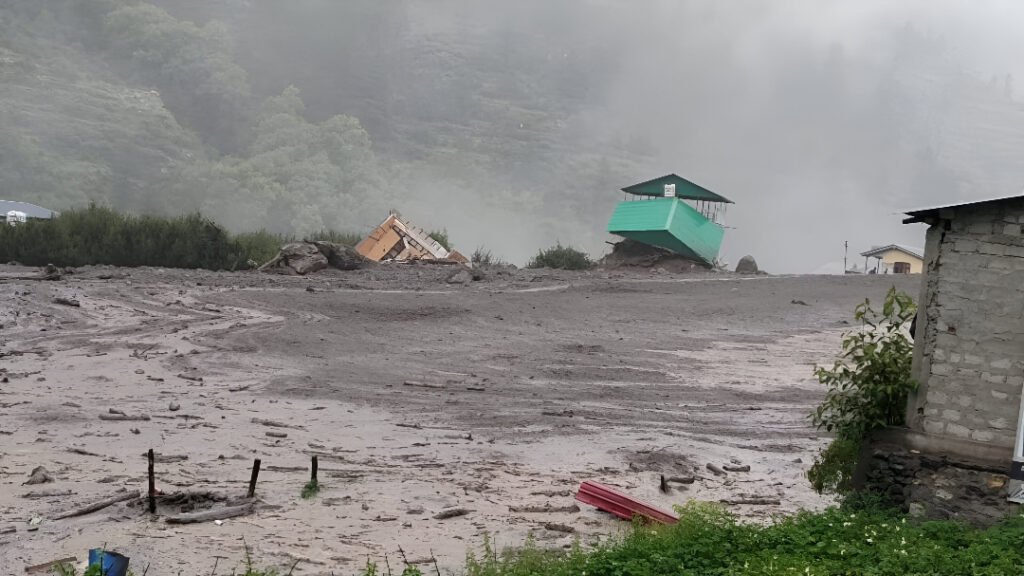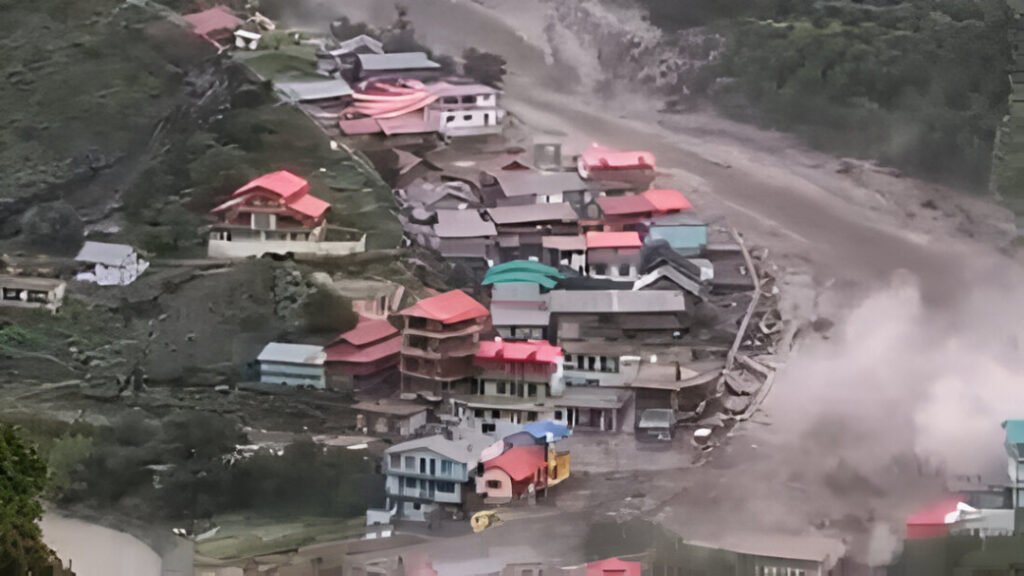
Tragedy Strikes Uttarkashi: Cloudburst Leaves Uttarakhand Reeling
A devastating cloudburst in Uttarakhand’s Uttarkashi district has unleashed powerful flash floods, resulting in at least 4 confirmed deaths and more than 50 people reported missing as of August 5, 2025. The disaster has not only triggered panic in local communities but also reignited urgent conversations on climate resilience and effective disaster management in the Himalayan region.
How the Cloudburst Unfolded
The catastrophic event occurred in the high-altitude villages of Dharali, near the pilgrimage routes of Gangotri and Yamunotri. Reports indicate that the cloudburst struck the catchment area of the Kheer Ganga river, sending torrents of silt-laden water crashing into Dharali and surrounding hamlets. Eyewitness accounts describe a powerful wall of water sweeping away homes, hotels, roads, and infrastructure in minutes, cutting off entire communities from outside help.
Harrowing videos shared by locals and tourists showed people scrambling to reach higher ground as floodwaters inundated villages. Many families were forced to flee with minimal belongings, and numerous houses, estimated between 20 and 25, along with several homestays, were swept away or severely damaged in the onslaught.
Unfolding Human Impact—Counting Fatalities, the Missing, and the Displaced
Cloudburst and flash flood in Uttarakhand.
— Mufaddal Vohra (@mufaddal_vohra) August 5, 2025
– Praying for everyone's safety! 🙏❤️pic.twitter.com/OfnSoYL5XA
While rescue missions were underway, officials confirmed a total of 4 fatalities. However, it was estimated that over 50 villagers were either children or elderly individuals who were missing and presumed to be either buried under the debris or swept away by the floodwaters. The actual number of deaths is likely to increase as the rescue teams get access to the remote and isolated areas. Locals mentioned that a few of the residents may be trapped in the collapsed structures or stranded on the riverbanks waiting to be rescued.
The sudden spike in the number of displaced individuals has resulted in loss of shelter for hundreds, and emergency relief camps are being established to provide sustenance, nourishment, and medicare. The psychological wounds of being a witness to such large-scale destruction of life and property have further escalated the trauma for the survivors, and communications remain patchy due to infrastructural damage.
Rescue Operations and Government Response
In response to the emerging tragic consequences, the Uttarakhand government as well as central relief agencies acted immediately and assisted in managing the consequences. The State Disaster Response Force (SDRF), National Disaster Response Force (NDRF), and local police, as well as army units, were deployed to the affected areas and started the extensive search and rescue operations. Amid continuous rains and the threat of further land slips, strongly increased flow of water complicates access to steep, cluttered areas, making the use of heavy machinery impossible and forcing the use of manual labor.
To address public concerns, Chief Minister Pushkar Singh Dhami confirmed that every measure is being taken and that the Char Dham Yatra is on hold for now to aid in risk management and to facilitate the movement of rescue vehicles. There were also requests asking the people residing by the river to relocate to more secure locations, followed by school closures being announced for Dehradun and the bordering districts that were impacted.
Environmental and Infrastructure Impact

This cloudburst disaster is now the most recent of the series of such events that impacted not just Uttarakhand but the entire Himalayan region. Experts are of the view that climate change, lack of proper control and management of structural planning, along with heavy deforestation, are the key factors that have cumulatively contributed to the increased occurrence of flash floods and landslides in the area. Essential structures such as bridges, roads, and public utilities have also experienced extreme structural damage, which has raised concerns regarding Uttarakhand’s mountainous transport and tourism routes.
The access routes to significant religious centers are still blocked by debris. The destruction of residential houses, businesses, and agricultural regions will most likely impair economic activity in the region for a long time, straining local economic activities and recovery efforts.
Community Recovery and a Forward-Looking Approach
The people of the Himalayas, along with the rest of Uttarakhand, have a long track record of coming together during these events. In addition, the spirit of Uttarakhand was on display when villagers and volunteers joined with officials, forming human chains to rescue neighbors and salvage belongings. The scope and occurrence of these ‘once-in-a-century’ disasters requires a completely new approach to state readiness. These disasters highlight the need for improved infrastructure and revised policies to minimize the loss of life, such as sustainable development, construction and building code enforcement, sustainable development, and stricter building codes.
Final remarks
The issue of ultraviolet radiation in India is on the rise, as evidenced by the flash floods in Uttarkashi. Numerous families are still waiting for news regarding their children, and the government is making relentless attempts to locate them. The report so far shows about four fatalities and fifty people missing. The disaster has thrust disaster preparedness, environmental preservation, and support for vulnerable mountain communities into sharp focus—issues demanding urgent policy and community action for the future of Uttarakhand and the entire Himalayan belt.











